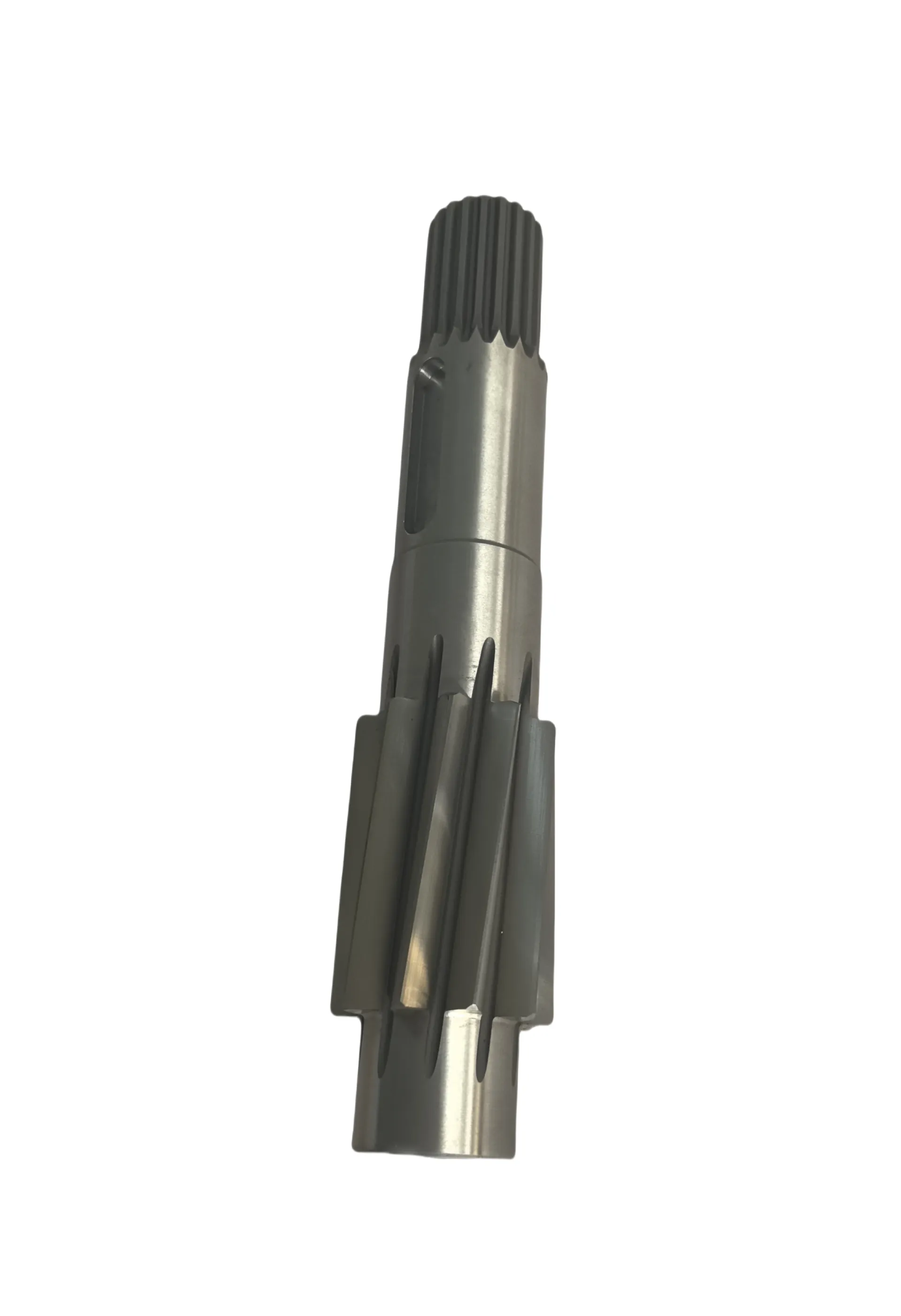The wheat machine input shaft plays a vital role in the overall operation of wheat processing machinery, such as wheat mills, harvesters, and cleaners. It serves as the connection between the power source, typically the engine or motor, and the machine’s internal components, enabling efficient power transfer to essential elements like the milling rollers, conveyors, and threshers. A well-designed input shaft ensures smooth operation, reduced maintenance, and enhanced productivity in wheat processing.
What Is A Wheat Machine Input Shaft?
The wheat machine input shaft is a cylindrical component that transmits rotational power from the engine or motor to various moving parts within the machine. This shaft typically connects the power source to critical components such as the milling system, sieves, and grain handling mechanisms. The input shaft is designed to handle high torque and speed variations during the wheat milling process, ensuring the smooth and continuous operation of the machinery.
Key Features Of Wheat Machine Input Shafts
- High Torque Capacity: Built to handle substantial torque, the input shaft ensures efficient power transmission, even during high-load operations.
- Durable Construction: Made from high-strength alloy steel or hardened steel, the shaft is engineered to resist wear and withstand harsh operational conditions in wheat processing.
- Precision Engineering: The shaft is precisely manufactured to ensure smooth meshing with other machine components, reducing vibration and wear while improving operational efficiency.
- Corrosion Resistance: Many wheat machine input shafts come with corrosion-resistant coatings to withstand exposure to dust, moisture, and grain-related chemicals, enhancing longevity.
- Versatile Compatibility: Compatible with various wheat milling systems, cleaners, and harvesters, making it suitable for different models and applications.
Applications Of Wheat Machine Input Shafts
- Wheat Milling Systems: Used to transfer power to the milling rollers and sieves for grinding and separating wheat grain from chaff.
- Wheat Harvesters: The input shaft connects the engine to the threshing and cutting systems, facilitating the harvesting of wheat with minimal power loss.
- Grain Cleaners: Ensures that power is efficiently transmitted to the cleaning mechanisms for removing dirt, debris, and unwanted material from the wheat.
- Seed Processing Equipment: In seed cleaners and sorters, the input shaft plays a crucial role in driving the machinery that separates quality seeds from impurities.
- Agricultural Equipment: Also found in other farm machinery, like conveyors and balers, that require reliable power distribution.
Why Choose High-Quality Wheat Machine Input Shafts?
Choosing high-quality wheat machine input shafts ensures that your wheat processing equipment runs efficiently with reduced risk of failure. Precision engineering helps minimize energy loss, while durable materials extend the lifespan of the shaft, reducing the need for frequent replacements. High-quality shafts also contribute to smooth operations, enhancing productivity and reducing downtime, which is crucial in the fast-paced environment of wheat processing.

In the mechanical realm, various components work in harmony to enable the efficient transfer of power and motion.

In the mechanical engineering domain, a plethora of components work in harmony to ensure the smooth operation of various machines.

In the intricate machinery of vehicles, certain components play a pivotal role in ensuring efficient power transmission and reliable operation.

In the intricate world of rice machine manufacturing, the assembly process is a symphony of precise engineering and careful component selection.

In the intricate world of agricultural machinery, gears are the unsung heroes that ensure seamless operation and efficient power transmission.

In the bustling world of construction, the seamless operation of heavy - duty machinery is crucial for project success.

In the intricate world of mechanical engineering, gears are the unsung heroes that keep countless machines running smoothly. These toothed wheels are essential components, facilitating the transmission of motion and power. From the robust drive gears that initiate movement to the specialized corn machine gear and returning machine gear designed for specific agricultural equipment, and the complex gearbox assembly that houses multiple gears, as well as the highly precise high precision gear used in demanding applications, each type plays a vital part in different machinery systems.

Mechanical systems, whether in industrial machinery or agricultural equipment, rely on a variety of components to function effectively. Among these essential parts, gears play a pivotal role in transmitting power and motion. From the gearbox gear that forms the core of power transmission within a gearbox to the drive gear that initiates the movement of a system, and the specialized bevel gears that change the direction of motion, gears are integral. In the agricultural sector, components like wheat machine gear and deep tiller gear are vital for the proper functioning of farming equipment, ensuring efficient crop processing and soil cultivation.

In the intricate world of mechanical engineering, certain components play a crucial role in ensuring the smooth operation of machinery, especially in the agricultural sector. From the gears that transfer power to the seats that facilitate meshing, each part contributes to the overall functionality and efficiency. Arc gear, meshing seat, harvester gear shaft, corn gear, and returning gear are among the key elements that are integral to various mechanical systems, particularly those found in agricultural equipment.

In the intricate world of mechanical engineering, a variety of specialized components work in harmony to ensure the smooth operation of machinery. From agricultural equipment to industrial gear systems, components like border inspection assembly, ring gear/gear ring, high frequency gear, meshing seat, and harvester input shaft play crucial and distinct roles. Each of these elements is designed with specific functions in mind, contributing to the overall performance, durability, and efficiency of the machinery they are part of.

Wheat Machine Input Shaft: Strength and Precision!
Boost efficiency with durable, high-performance input shafts for your wheat machinery!
International layout
Spread all over the world
our products are exported to various parts of the world. Currently, our products have been exported to more than 40 countries Our products cover Asia, Europe, Africa, South America, North America, and Oceania
Sign up
for Newsletter
Subscribe to the weekly newsletter for all the latest updates






